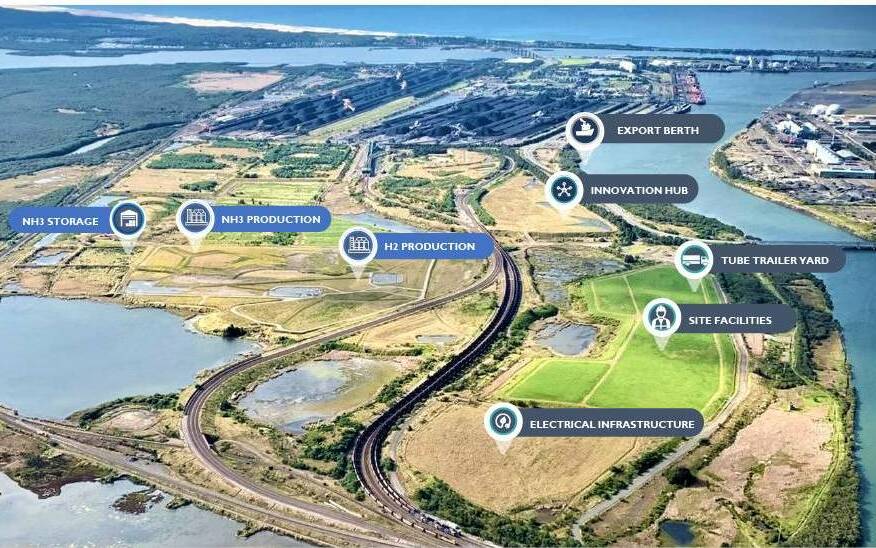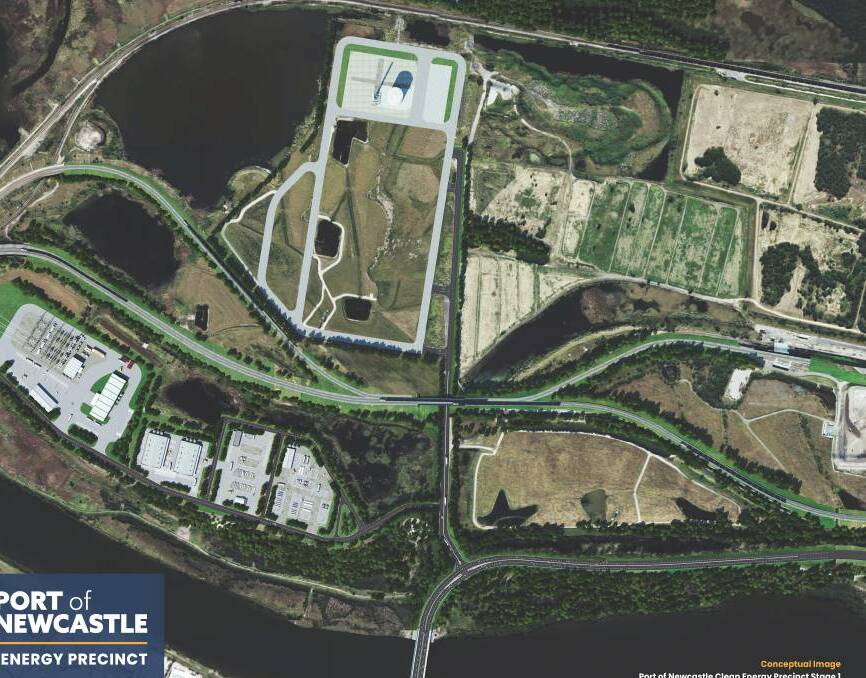The Port of Newcastle has invited the public to have its say on its proposed clean energy precinct on Kooragang Island.
The 220-hectare parcel of port land is earmarked to play a vital role in positioning the region as a leading clean energy production, storage and export hub.
The precinct is due to be operational in late 2027 or early 2028, with the first clean energy exports also due to occur in 2028.
Port of Newcastle chief commercial officer and project lead Simon Byrnes said the port was keen to receive feedback on its plans.
"With the community, our goal is to come to a common understanding of what's happening; how the project will benefit the community and how we can address any concerns they may have," he said.
The port has already briefed local councils about the project and it will hold community drop-in sessions in coming weeks.
Sessions will be held at Peibri Place - 97 Hannell Street, Wickham (Wickham Marina).
- Monday 28 August 4pm - 7pm
- Thursday 31 August 4pm -7pm
- Saturday 2 September 9am - 12pm
An estimated 5260 jobs will be created in the construction phase and there will be about 650 ongoing jobs.

Stage 1, to be completed by 2028, will involve the establishment of lead-in infrastructure, including electrical infrastructure, water infrastructure and ancillary works, construction vehicle and workforce vehicle parking, construction laydown and stockpiles and construction of a clean energy storage facility.
The consultation phase, which is part of the broader approval process, is expected to take about two years.
Mitsubishi, KEPCO, Japanese shipping firm MOL Group, Fortescue Future Industries, Orica, Origin Energy and Dutch clean energy technology venture firm Platform Zero are among the stakeholders that have signed formal memoranda of understanding to investigate commercial opportunities in the precinct.
The assessment and approval process will be assisted by a collaborative agreement between government departments.
"This is a unique situation in the planning process because we are trying to create a new industry," Mr Byrnes said.
"We have been really happy with the support from the government regarding how we work through that process. For instance, the Office of Environment and Climate change is going to partner with the Department of Planning and we will look at things like hazard studies collaboratively.
"We will also draw on experience from our memorandum of understanding partners in Rotterdam around how they've been addressing the same issues in Europe for the last 12 months to two years."

It is envisaged the precinct will use about 25 megalitres of water a day. The port has signed a memorandum of understanding with Conexa, which supplies recycled water to Kooragang Island.
"Conexa and ourselves are about to kick off a feasibility study, which will have some input from Hunter water, but the vision is to have a recycled water resource that can provide water to the site and potentially scale that over time," Mr Byrnes said.
The precinct is located on the former Kooragang Island Waste Emplacement Facility, which is adjacent to the internationally recognised Ramsar listed wetlands.
The precinct land, which has been under the custodianship of the Hunter Development Corporation since 2014, has been remediated and capped.
"We will essentially be taking custodianship of a landfill site and returning that to productive use, which will hopefully include clean energy production," Mr Byrnes said.
"At the same time we will create a safe environment for the green and gold and bullfrog. They benefit from the current environmental characteristics of that site. The thing that would usually kill them in the wild doesn't grow there because the site is just contaminated enough. We will be looking at maintaining that Goldilocks zone and having that species prosper as it has over the last decade."







